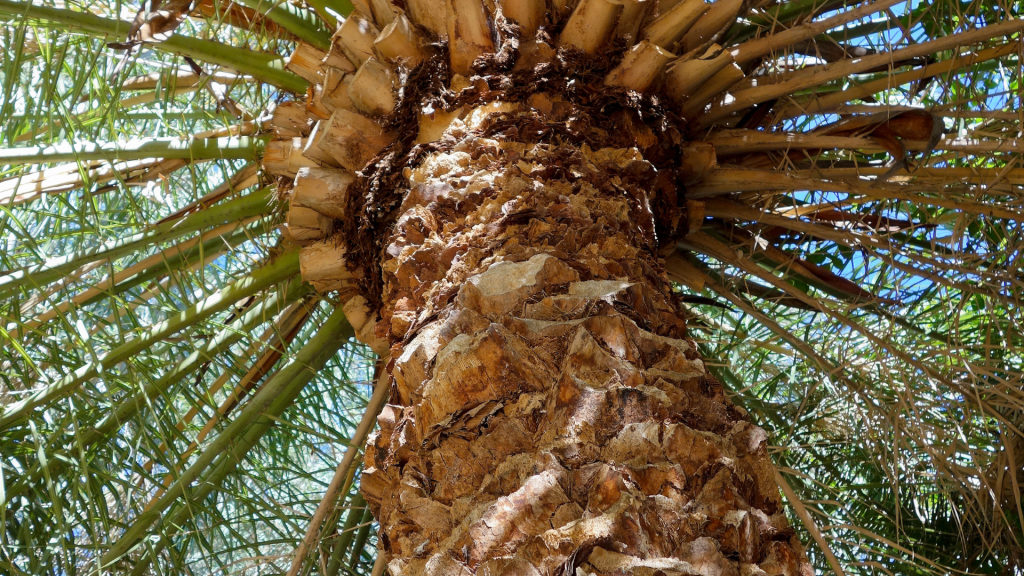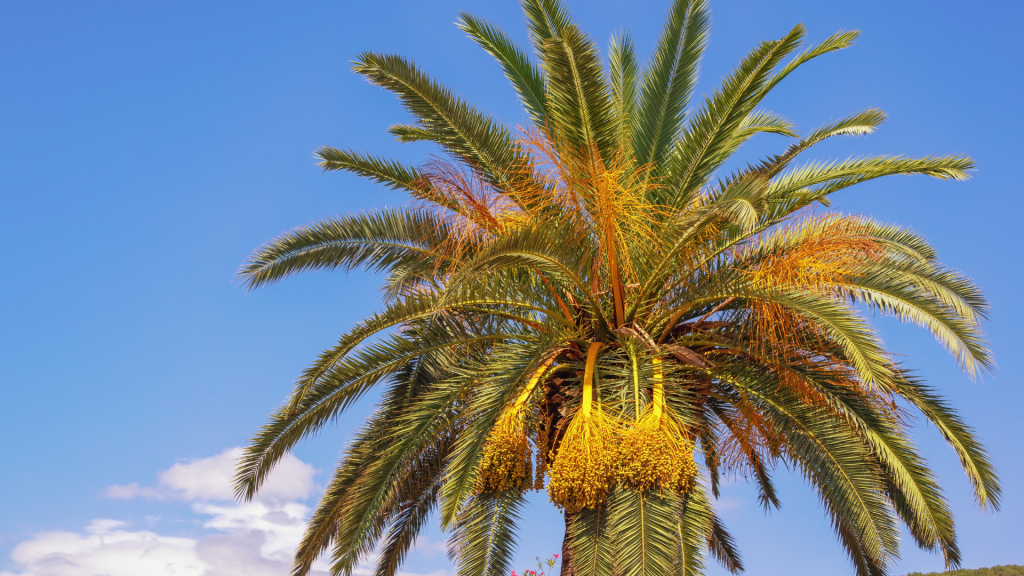Expert insights from Fred De Maria, ISA-Certified Arborist – 35+ years helping Orange County landscapes thrive

A Real Threat to Your Beautiful Palms
If you live in Orange County and have palm trees, especially Canary Island Date Palms, this is something you need to know.
The South American Palm Weevil (SAPW) is a serious pest that’s already taken down some of the most iconic palms across Southern California. It’s not just an inconvenience — it’s one of the leading reasons homeowners, HOAs, and property managers are losing large, mature palms right now.
At OC Plant Healthcare, we’ve been helping clients identify and stop this pest early — before it does irreversible damage.
So, What Is the South American Palm Weevil?
It’s a large black beetle (about 1–2 inches long) that’s especially attracted to stressed or aging palm trees. The real danger? It lays its eggs inside the crown of your palm — the top growth area where all fronds emerge.
The larvae that hatch then eat their way into the heart of the tree, hollowing it out from the inside. Unfortunately, you often don’t see anything wrong until it’s too late — when the entire canopy collapses.
Even worse, this beetle can carry a microscopic parasite called the Red Ring Nematode, which causes a fast-moving, often fatal disease in palms.
Is Your Palm at Risk?
If your property has any of the following, you’re potentially in the weevil’s path:
- Canary Island Date Palms
- Mexican Fan Palms
- Queen or Date Palms
- Decorative palms in commercial landscapes or resorts
And if your trees are under stress (from drought, poor soil, or pruning wounds), they’re even more likely to be targeted.
Signs You Might Already Have a Problem
We always tell clients: the earlier you catch this, the better. Here’s what to look for:
- Fronds drooping or collapsing suddenly
- A strange fermented or “rotting” smell near the top
- Sap oozing from the trunk or visible chew marks
- Small holes near the base or crown
- Hearing a “crunching” sound coming from inside the trunk (yes, really!)
- Seeing the adult weevils — big, black, and hard to miss
Even one of these signs should prompt a call.

How We Help You Stay Ahead of the Weevil
At OC Plant Healthcare, we’ve built a complete program to protect palms in Orange County — before they’re attacked.
Visual Inspections & Early Detection
- We know what to look for, even before symptoms are obvious. We’ll inspect the crown, root zone, and trunk using tools and ladders to catch problems early.
Safe, Targeted Trunk Injections
- We use specialized equipment to inject treatment directly into your tree’s system — no spraying or runoff, and safe for pets, pollinators, and people.
Preventive Soil Health Boosters
- Healthy palms start with healthy soil. We add bio-stimulants and beneficial microbes to your root zone to help trees resist pests naturally.
Seasonal Monitoring Plans
- Many of our clients opt into ongoing palm health programs, especially those managing HOAs, resorts, or luxury residential landscapes.
Real Talk: Why This Matters
Losing a mature palm tree can cost thousands in removal, replacement, and landscape disruption. Worse, a dying tree becomes a host, putting your other palms — and your neighbor’s — at risk too.
This isn’t about upselling you on treatments. It’s about protecting the health and value of your property before a preventable pest takes over.
What Our Clients Say
“Fred and his team saved our two Canary Island palms just in time. We had no idea they were under attack until he showed us what to look for. They’re thriving now.”
— Kim R., Newport Beach
“We thought we’d need to replace the palm in our front yard — but with deep injections and soil treatments, it bounced back. Thank you!”
— James M., Laguna Niguel
Frequently Asked Questions About SAPW (South American Palm Weevil)
In the right conditions, SAPW larvae can destroy the interior of a palm tree in just a few months. If the tree is already stressed, collapse can happen even faster. That’s why early detection and prevention are absolutely critical.
Weevils are most active during the warmer months — typically late spring through early fall — but in our mild Orange County climate, they can be active almost y
Unfortunately, no. Most over-the-counter solutions won’t reach deep enough into the crown or trunk where the larvae are feeding. Effective treatment requires professional-grade trunk injections that deliver insecticides systemically through the vascular tissue of the palm.
Pruning can sometimes increase the risk if done incorrectly. Open wounds attract adult weevils looking to lay eggs. We recommend avoiding crown pruning during peak weevil activity months and letting a professional handle any necessary cuts.
No. Our treatment is delivered inside the tree through injection, so it doesn’t leave residue on the surface or flowers. It’s safe for bees, butterflies, birds, and pets — and won’t impact surrounding plant life.
Treating a tree is typically a fraction of the cost of removal and replacement. Depending on the size and location, removing
Yes, we do. Many clients — especially HOAs and commercial properties — enroll in seasonal or annual care plans that include SAPW prevention, bio-stimulants, and soil management. We’ll tailor the plan to your palm species and risk level.
If we catch it early enough, we can often save the tree with trunk injections and root support. If the crown has already collapsed or shows significant decay, we may recommend safe removal and protective treatment for nearby palms.
Yes — palms like Mediterranean Fan Palms tend to be less attractive to SAPW, while Canary Island Date Palms and Mexican Fan Palms are high-risk. That said, no palm is 100% immune, especially when stressed.
We recommend professional inspections every 4–6 months for at-risk species. If you’ve had weevil problems in your area, or notice any early signs, don’t wait — even one season can make the difference between saving or losing a palm.

Already Seeing Symptoms? Call Our Arborist Team Now
If your palm looks unhealthy or unstable, don’t wait. Early intervention could save your tree and avoid costly removal.
or
Proudly rooted in Orange County, CA


